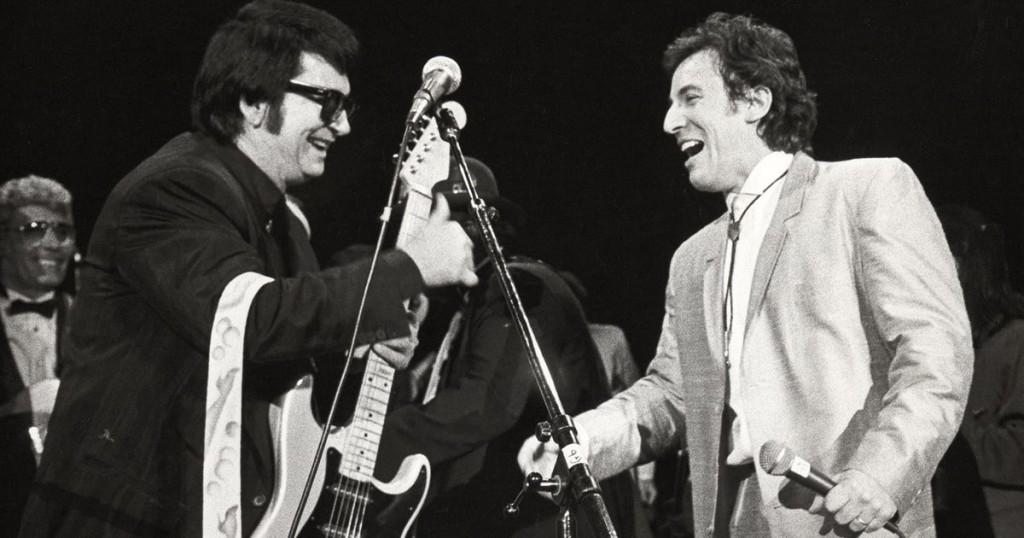Culture
Talking Roy Orbison With Todd Burge
By: Emily Votaw
Posted on:
West Virginia-based troubadour Todd Burge discovered Roy Orbison the way most of Generation X did: via David Lynch’s bizarre arthouse comedy-horror movie Blue Velvet.
“I was a big Dennis Hopper fan, from the Easy Rider days – and I’m not alone in saying that when I saw (Blue Velvet) it blew my mind,” said Burge. “The scene with (Orbison’s) “In Dreams,” was just so powerful. I couldn’t get enough of that song.”
“If I think about the artists that I really love – from David Bowie to Richard Thompson to Roy Orbison – they’re all a hybrid of many things, kind of a musical confusion. Those are the things that I dig the most; the things you can’t put your finger on,” said Burge. “There isn’t another voice like Orbison’s in rock ‘n’ roll. His music is cosmopolitan; like thick-sounding country, like Eddy Arnold stuff, blended together with this big production sound and then this operatic voice over all of it.”
Burge said that some of his favorite Orbison tunes, such as “In Dreams” and “Just Walk Away” are devoid of the typical pop song structure. They don’t have a chorus at all.
“With most songs, you need a verse and chorus to pull you through and interest you, but with some of (Orbison’s) songs, they just build up from the beginning and by the end you have this huge monster,” said Burge. “It’s like you’re taken on this journey and there is this enormous climax at the end, it’s hard to describe; it starts out as something small and then by the end it leaves you like ‘holy crap!’”
Shortly after the success of Blue Velvet and the associated resurgence in Orbison’s popularity; Orbison was accompanied by a who’s who of prominent late ‘80s hipsters and celebrities to record Roy Orbison and Friends: a Black and White Night in the Ambassador Hotel’s Cocoanut Grove nightclub in Los Angeles in September 1987. The film was directed and recorded by T Bone Burnett.
This year marks the 30th anniversary of the performance, which took place only 14 months before Orbison passed away in December of 1988. To mark the anniversary, Roy’s Boys LLC and Legacy Recordings have collaborated to release Roy Orbison: Black and White 30, an expanded and completely re-edited version of the original concert film, which WOUB-TV will broadcast Thursday, March 16 at 8 p.m.

One of many songs featured on the film is the smash hit “Oh! Pretty Woman,” which is connected to the region by way of West Virginia born musician Wayne Moss. Moss is a legendary Nashville session musician and relatively new inductee into the West Virginia Music Hall of Fame, who played guitar on the original 1964 recording of the song. Moss has played with numerous impressive musicians, including Bob Dylan, Leo Kottke, Fats Domino, The Everly Brothers and many others.
Burge is a fan of Black and White, and he re-watched it sometime in 2015, when he was working on mixing his album Imitation Life, with long-time collaborator Tim O’Brien in John Prine’s Nashville studio, The Butcher Shop.
“T Bone Burnett came to the studio to write in John Prine’s office with Bonnie Prince Billy when we were working on my mixes. And I know that this sounds like a weird joke I’m setting up – but it’s really what happened. T Bone just started hanging out while we were working on my mixes. Since I had just seen that Roy Orbison movie, I started to talk about Orbison’s voice, how it’s operatic and all that. T Bone said that what surprised him most about recording Orbison was how quietly he sang. He said that it was a whisper. T Bone had thought that it was going to be intense, over the top, loud. But he actually sang so soft everybody had to play down, and T Bone had this realization that things just sound better when you’re not beating the hell out of them,” said Burge. “It was a profound moment for me to hear him say that. I’m still thinking about that one conversation, and how that observation is applicable to the way I play and perform and record.”

